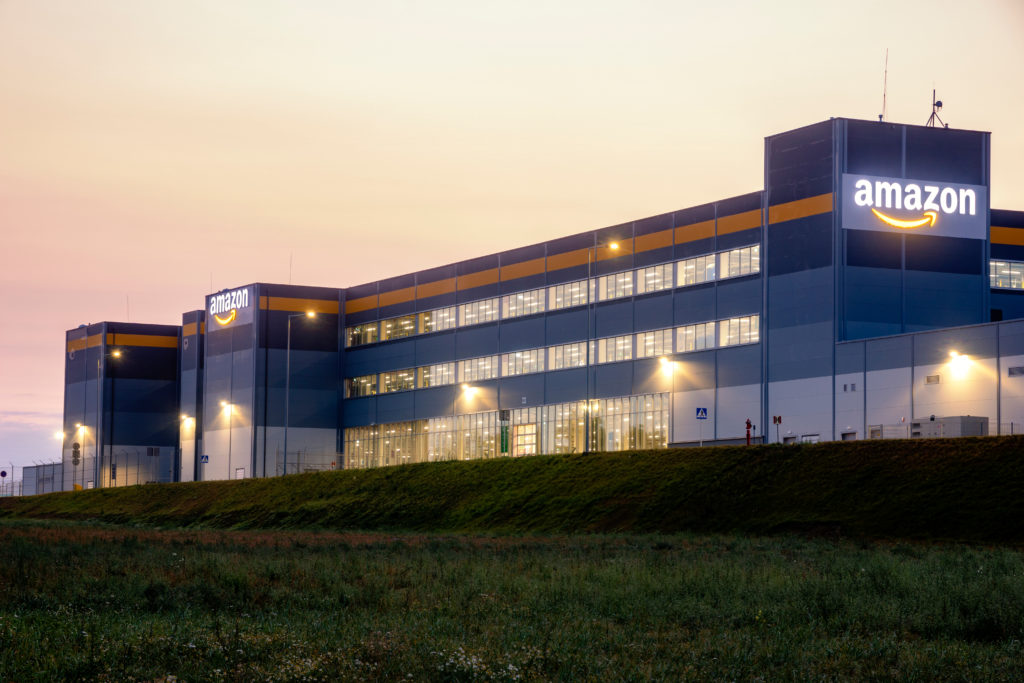Amazon Prime members in the USA can now pick a weekly delivery day, when all their Amazon purchases will be delivered. Dean Maciuba and Marek Różycki (Last Mile Experts) with Ian Kerr (Postal Hub Podcast) discuss what this advance means for the e-commerce delivery market
Amazon just keeps on innovating in delivery while maintaining its focus on the customer. Its new ‘Amazon Day’ delivery offering enables Amazon Prime members to designate a weekly delivery day for all their Amazon shipments.
The e-commerce giant tested the project with employees in 2018, and late last year started rolling it out to customers in selected areas of the USA.
Amazon is doing what the other carriers can’t
Amazon is leveraging its dominance and technology prowess in the delivery space as UPS, FedEx, USPS and other e-commerce merchants can’t support such a service. The offering will enable Amazon to increase productivity and future profitability for its new Delivery Service Partners (DSP) as it will drive more packages per delivery stop.
Amazon Day offers delivery options for consumers that drive further convenience and choice, offering an alternative to access-point or locker pick-up.
How is Amazon doing it?
Amazon already offered consolidated delivery, but not on a specific day of the customer’s choosing. Amazon Day represents the next iteration in Amazon’s customer-centric delivery strategy.
But how is Amazon doing it? Has Amazon developed a technology solution to synchronize the arrival of customer packages to the relevant terminal on the designated delivery day? Or will the delivery companies, no matter who they are, have to warehouse shipments by customer, and hold them until delivery-day?
Amazon uses super smart algorithms to manage stock flows, so undoubtedly technology plays a huge role in enabling Amazon Day. But will Amazon Day be reserved for areas served by Amazon DSPs? Or will it be supported by the other carriers?
Environmental benefit
Delivering multiple packages to one delivery point on a designated day is good news for the environment too. Emissions per package would be reduced, and potentially there is a saving in packaging if Amazon can consolidate purchases into one or two boxes.
Savings in delivery
Amazon will potentially make savings in the last mile. This might be bad news for USPS’s Parcel Select service – especially if Amazon Day deliveries are routed to Amazon’s DSPs or if there is a ‘peak’ preferred delivery day chosen by consignees, at the cost of other days (this could result in underutilization of resources on some days and the need for incremental delivery capacity on others).
Delivery consolidation in Italy
Italian delivery and technology company Milkman offers consolidated delivery through its consumer app.
“It was a gamble,” Milkman’s head of communications Adamo Dagradi tells us. “Everyone was speaking about same-day, same-hour. We, on the other hand, actually invited app users to consolidate: better for their pockets, better for the environment.”
The offer has been a success: “Clear proof that speed is more a marketing stunt than a widely felt necessity,” claims Dagradi.
Milkman has built its core business on day-specific deliveries associated with timeslots. 19.7% of Italian e-shoppers don’t know the day they will receive their parcels, while only 4.5% know the day and hour (data from Consorzio Netcomm).
“In Italy, Amazon right now is betting on speed: but what about those 78.2% of Italians that receive their goods only at home? Designated day is good but without a timeslot you still have to wait long hours for the courier to ring.”
Will others follow?
Australia Post trialled a designated delivery day service for parcel deliveries in 2017, but otherwise postal and delivery companies seem to have shown little interest in offering a service like Amazon Day.
What is holding delivery companies back?
The commercial carriers do not have the luxury of fulfilment centers able to hold and supply stock at the right time; local UPS and FedEx terminals are not designed to support parcel warehousing and local, delivery day specific shipment consolidation.
The legacy carriers’ terminals and technology are designed to quickly move packages in and out of their buildings, not hold them. That is why there is so much pressure on drivers to not bring parcels back to the building and automatically take parcels from failed delivery attempts to an access point. Also, the customer data they hold is more limited and they would need to create and maintain customer specific preference data.
Conclusions
Once again, Amazon is using its customer data and its operational and IT capabilities to offer something that commercial carriers and posts will have a job competing with.
Amazon is slowly, but surely, changing the face of the last mile, enhancing the customer experience every step of the way. The pressure is on parcel and postal operators to raise their game.
Bios:

Ian Kerr is the founder and host of the Postal Hub Podcast, the weekly podcast for the postal and delivery sectors.

Marek Różycki is managing partner at Last Mile Experts, specializing in CEP and e-commerce last-mile advisory.
![]()



 Dean Maciuba is a parcel industry expert and has previously served UPS and FedEx for 37 years. Today, Maciuba is the managing partner for North America at Last Mile Experts.
Dean Maciuba is a parcel industry expert and has previously served UPS and FedEx for 37 years. Today, Maciuba is the managing partner for North America at Last Mile Experts.